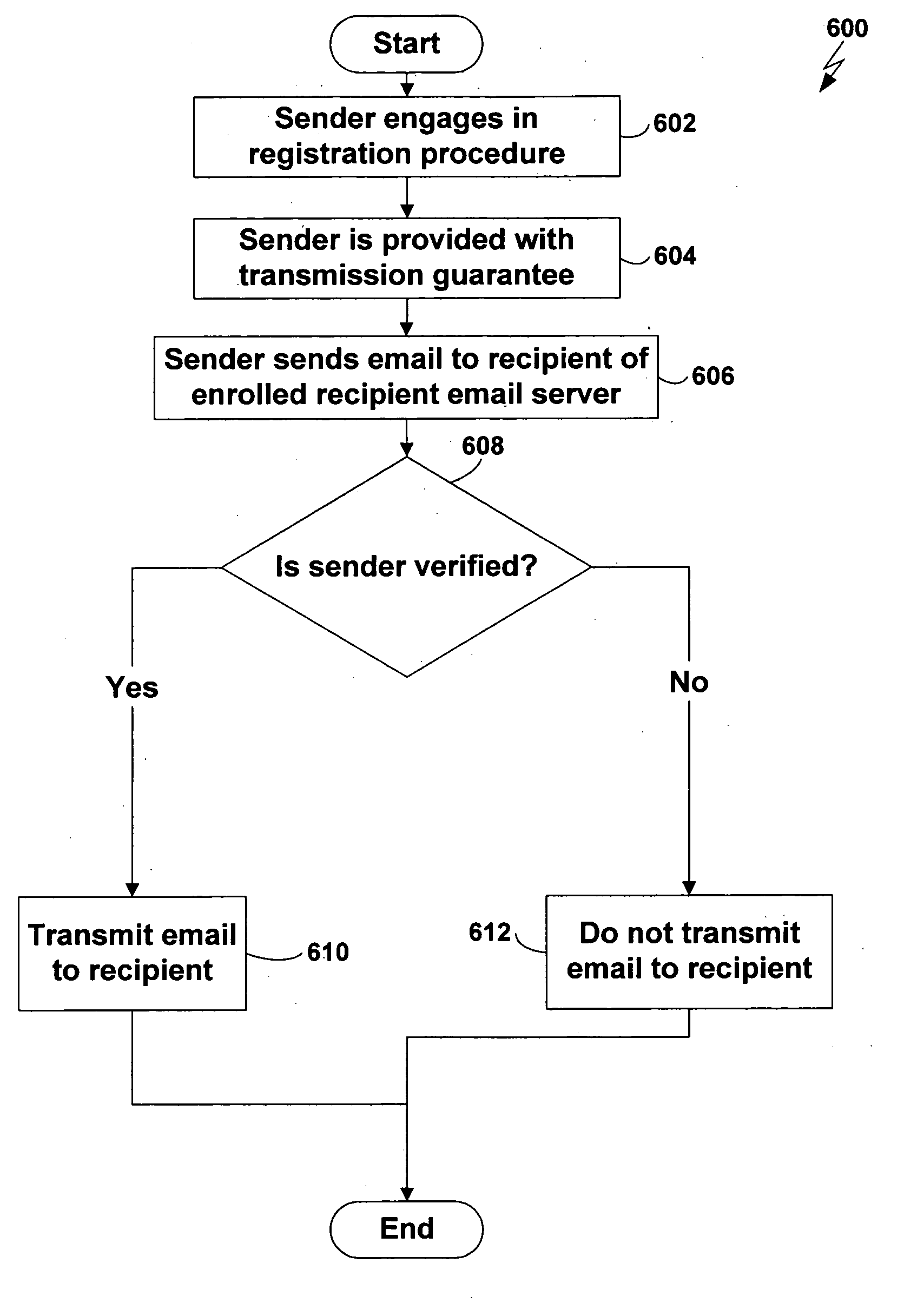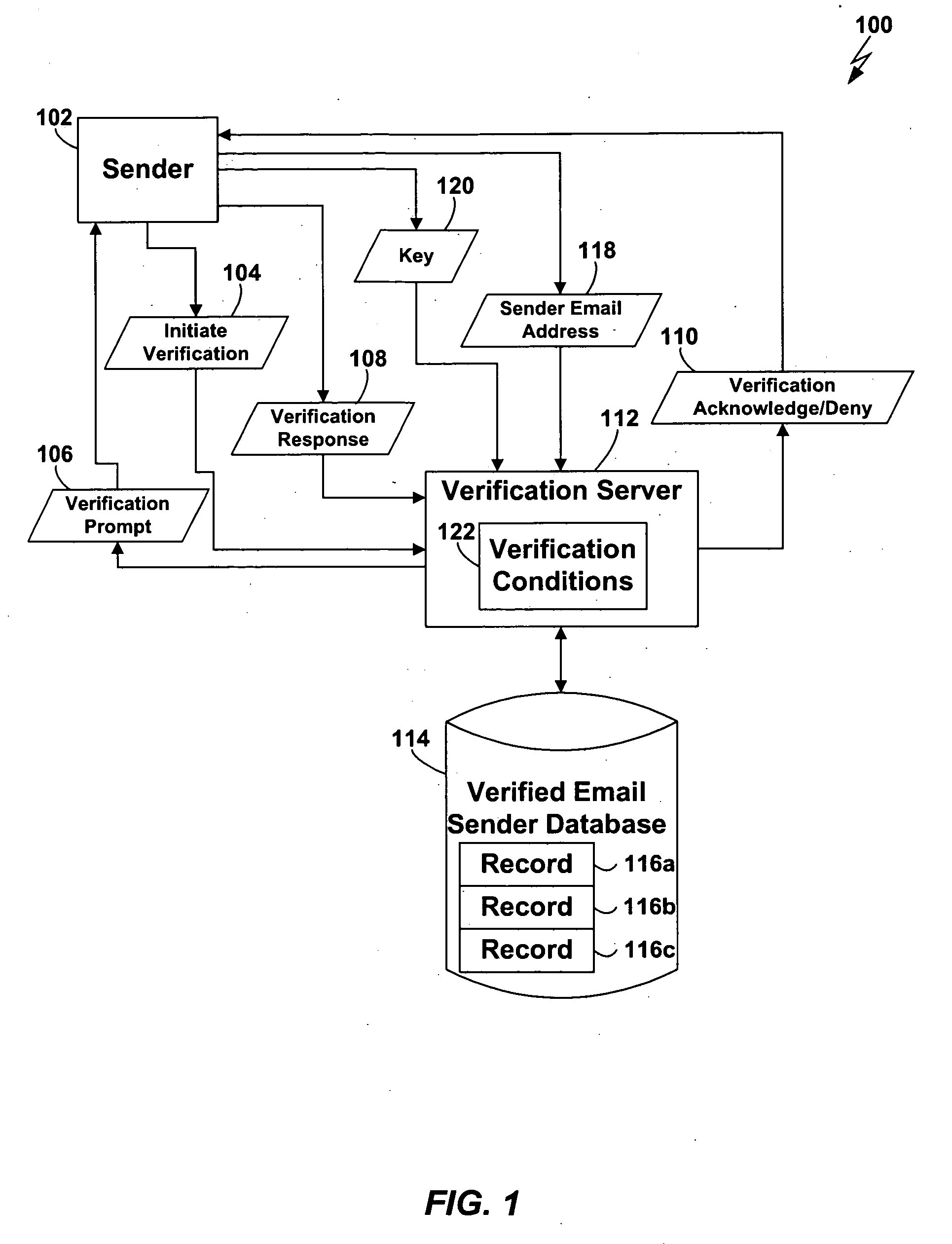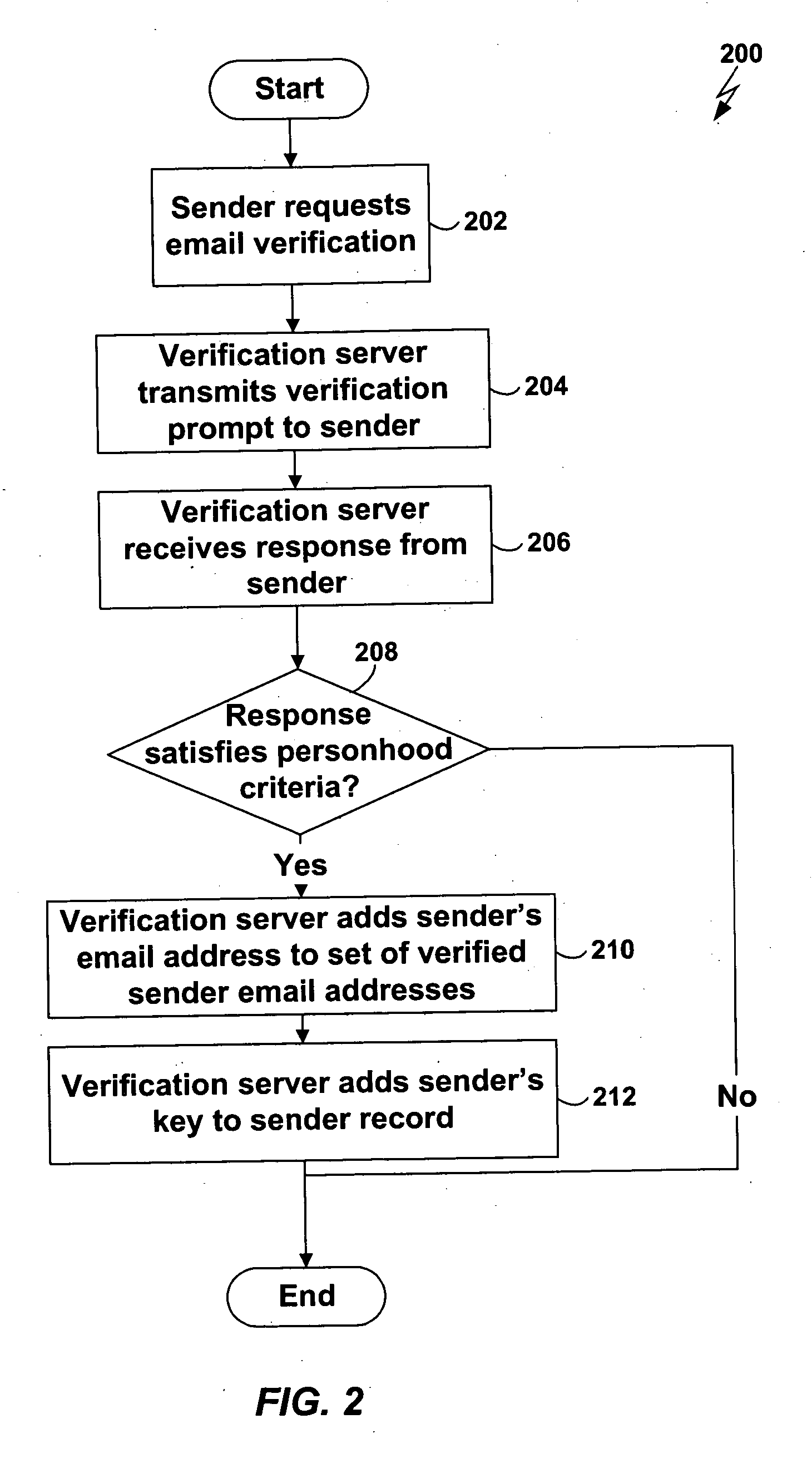Controlling transmission of email
a technology for controlling the transmission of email and email, applied in the field of electronic communication, can solve the problems of affecting the use of email, creating a variety of problems, and consuming a lot of time to browse through the inbox,
- Summary
- Abstract
- Description
- Claims
- Application Information
AI Technical Summary
Problems solved by technology
Method used
Image
Examples
Embodiment Construction
[0042] Most, if not all, of the difficulty in controlling spam from an engineering standpoint stems from the fact that the system for transmitting email—Simple Mail Transfer Protocol (SMTP)—was designed with a faulty feedback loop. When an SMTP server is unable to deliver an email message (because, for example, the destination email address is invalid), it sends a Non-Delivery Report (NDR) to the sender of the email. Because the business model of spammers is based on keeping their cost per email transmitted as low as possible, they may send spam to millions of email addresses, many thousands of which may be invalid or otherwise unreachable. If the spammer had to receive an NDR for each such invalid email, the cost to the spammer would rise significantly and thereby threaten the viability of the spammer's business model.
[0043] As a result, spammers often fabricate their email addresses to avoid receiving the NDRs that are sent to them. The SMTP protocol, however, provides no mechani...
PUM
 Login to View More
Login to View More Abstract
Description
Claims
Application Information
 Login to View More
Login to View More - R&D
- Intellectual Property
- Life Sciences
- Materials
- Tech Scout
- Unparalleled Data Quality
- Higher Quality Content
- 60% Fewer Hallucinations
Browse by: Latest US Patents, China's latest patents, Technical Efficacy Thesaurus, Application Domain, Technology Topic, Popular Technical Reports.
© 2025 PatSnap. All rights reserved.Legal|Privacy policy|Modern Slavery Act Transparency Statement|Sitemap|About US| Contact US: help@patsnap.com



